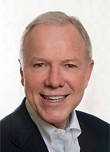4 Lessons Medtech Innovators Can Learn From Art Masters
By Thomas Hickey, founder & host, MedTech Gurus Podcast

Depending on your perspective, the great French painter Paul Cézanne was either an extreme perfectionist … or severely OCD. Cézanne, you see, insisted subjects of his portraits afford him at least 100 sittings. Or they could move along and find someone else with brushes to do the work.
Dutch Master Vincent Van Gogh, a bit of a tortured soul, possessed such a relentless pursuit of perfection he drove himself mad. He began hallucinating and, in the midst of one of his blackout episodes, sliced part of his left ear off. He later recalled nothing of the self-mutilation.
Another Dutch Master, Rembrandt Harmenszoon van Rijn (or more popularly and simply, “Rembrandt”), was such a stickler for detail, quality, and perfection that his persona lives on more than 350 years after his passing and serves as a universal gold standard of sorts. There are Rembrandt restaurants, Rembrandt hotels, Rembrandt toothpaste, and even pop music (The Rembrandts wrote and recorded I’ll Be There for You, theme song to the hit TV show Friends).
By now, you’re probably scratching your head and wondering why I’m invoking some of the world’s greatest artists in an article targeting medtech professionals. Stay with me: You and your company are on the verge of greatness. You have a masterpiece in the making in the form of a medtech innovation. As far as you’re concerned, it’s a can’t-miss world-changer. But before you get ahead of yourself, slow down and take a few cues from Rembrandt, Paul, and Vinny. We can learn a lot from the best of the best from the world of art.
Here are four lessons to master from the Masters if you’re to get from here to where you want to be.
1. Be Sure Your Innovation Is “A Pleasing Totality”
Think of your innovation as a mosaic. Critics of this genre often dismiss mosaics as a mishmash of pieces and parts, colors, and chaos. Others appreciate and value the subtle fusion of hues, media, textures, and placement, all coming together to create a pleasing totality. A tedious, thoughtful process and the sum of the parts can result in something extraordinary.
Or not.
It’s your responsibility to achieve the latter and avoid the former. And you do this by mindfully tending to all the steps, considering the tiniest of details, tweaking and refining, and gathering input and perspectives of all who appreciate such things. Bring everyone who counts into the discussion as many times as necessary to ensure you’re on the road to a true masterpiece.
In medtech, smart innovators are proactive and reach out to all stakeholders in advance to enhance their chances of achieving marketplace success. They are also confidently and intimately familiar with product benefits while also recognizing potential pitfalls such as the challenges of transitioning to a new technology, the impact of a new device on the existing workflow, whether it fits into the hospital’s or hospital system’s economic model, and, of course, the impact it promises as measured by quantifiable positive patient outcome data. And by the way, if your innovation truly is a blockbuster, decision makers are willing to allow slight changes in workflow if positive patient outcomes outweigh the challenges.
2. Even The Art Masters Didn’t Go It Alone
In MedTech Gurus podcast #55 Episode #55 with Dr. John Kim, I chat with San Francisco-area emergency room physician and hospitalist Dr. John Kim, who is also a partner at Aphelion Capital, a venture capital firm.
Much like the art Masters, Dr. Kim says medtech companies must be proactive and approach potential investors in the early stages of development. In the case of Aphelion, Dr. Kim says he and his partners like to hear from entrepreneurs ASAP, oftentimes before FDA authorization. Though investors may not yet be ready to pull out their checkbooks, they do want to see evidence the medtech company is filling in all the colors and shapes of that mosaic – in this case, the innovative new medical device – and the art form is clearly taking shape. This also affords Aphelion the opportunity to provide constructive input.
There are always certain benchmarks and process points along the development pathway for the innovator. Know that potential investors will be watching and, as the art form is coming together (and there’s evidence you’re actually heeding their input), they’ll know you’re on the right track and will write that hefty check you need to move your device closer to the healthcare marketplace.
3. “Sketch” First – And That Takes Time
There are infinitely more canvasses scrapped than there are canvasses hanging on the walls of an art gallery. This speaks to the imperfect nature of human trial and error. A masterpiece isn’t created overnight or in one sitting. A masterpiece cannot be created in a vacuum devoid of comprehensive thought and deep introspection.
Dr. Kim recalled a situation from a few years back in which he and his partners at Aphelion invested in a promising new medical technology. It was a device to be used in long-term care facilities that required Wi-Fi. No biggie, right? Wi-Fi is omnipresent.
Not so much. You see, the company that developed and tested the product locally was headquartered in Silicon Valley, where even your morning coffee cup probably has a robust Wi-Fi connection. What the investors didn’t realize was many parts of the country aren’t as fortunate when it comes to wireless internet coverage, and a large percentage of facilities were automatically eliminated from the sales mix.
A little more depth, breadth, and discovery in the product development phase likely would’ve revealed this barrier to success. Remember, even the art Masters sketched first before painting, assembling, or sculpting. They spent considerable time (sometimes years!) designing, developing, and completing a masterpiece. It’s much easier to take the time and address issues up front than to have to go back and “un-screw” them. In construction, it’s the “measure twice, cut once” truism.
4. Don’t Let Detractors Get You Down
No single work of art is universally loved and embraced. The same is true for medtech innovations. There will always be some degree of resistance and a fair share of detractors, too. Get used to it. And take heart; you can offset this.
Those medtech innovators most likely to succeed are the ones who have a clear understanding of how difficult change can be for clinicians, hospital administrators, and others. Most likely, the bulk of the pushback will come from physicians who are quite comfortable with their current routines. They simply don’t want to change because, for a while at least, change is disruptive and uncomfortable. Be prepared for this. And be sure your product’s benefits are so compelling, so quantifiable with hard data, and so worth a shift in practice that it’s simply too amazing to pass up. That means having a certain Wow! factor much like a piece of art that stops you dead in your tracks.
In summary, you and your company have a masterpiece in the making – that can’t-miss world-changer I mentioned earlier. But be careful when selecting and assembling the various pieces of the mosaic. Be sure your work is “a pleasing totality.”
Connect with potential “art buyers” (in your case, investors) early to receive the gift of their advice and knowledge, and later, to hopefully receive the all-important check you need written to get your medtech innovation closer to the marketplace.
Finally, understand there will be detractors, just as there are chronically grumpy art critics. Accept this and please the ones you most need on your side. And sketch, sketch, sketch. Tinker, tinker, tinker. Think it all through and consider all angles and perspectives before embarking on your road to great success.
This can be the difference between your masterpiece hanging in Le Louvre … or being attached by a magnet to a refrigerator door.
About The Author:
 Thomas Hickey is a senior consultant at Excelerant Consulting as well as host of Med Tech Gurus, a podcast focused on medical entrepreneurship and marketing (available on Apple Podcasts and other platforms). He develops innovative strategies and tactics and possesses a deep understanding of sales strategy and sales channels. With more than 35 years’ experience in the medical device industry and executive-level experience with manufacturers and group purchasing organizations, Hickey is skilled at assessing launches, start-ups, international distribution, technology, and market feasibility. He has successfully launched several products and hired, coached, and trained hundreds of independent and distributor sales team members. He can be reached at info@excelerantconsulting.com.
Thomas Hickey is a senior consultant at Excelerant Consulting as well as host of Med Tech Gurus, a podcast focused on medical entrepreneurship and marketing (available on Apple Podcasts and other platforms). He develops innovative strategies and tactics and possesses a deep understanding of sales strategy and sales channels. With more than 35 years’ experience in the medical device industry and executive-level experience with manufacturers and group purchasing organizations, Hickey is skilled at assessing launches, start-ups, international distribution, technology, and market feasibility. He has successfully launched several products and hired, coached, and trained hundreds of independent and distributor sales team members. He can be reached at info@excelerantconsulting.com.
